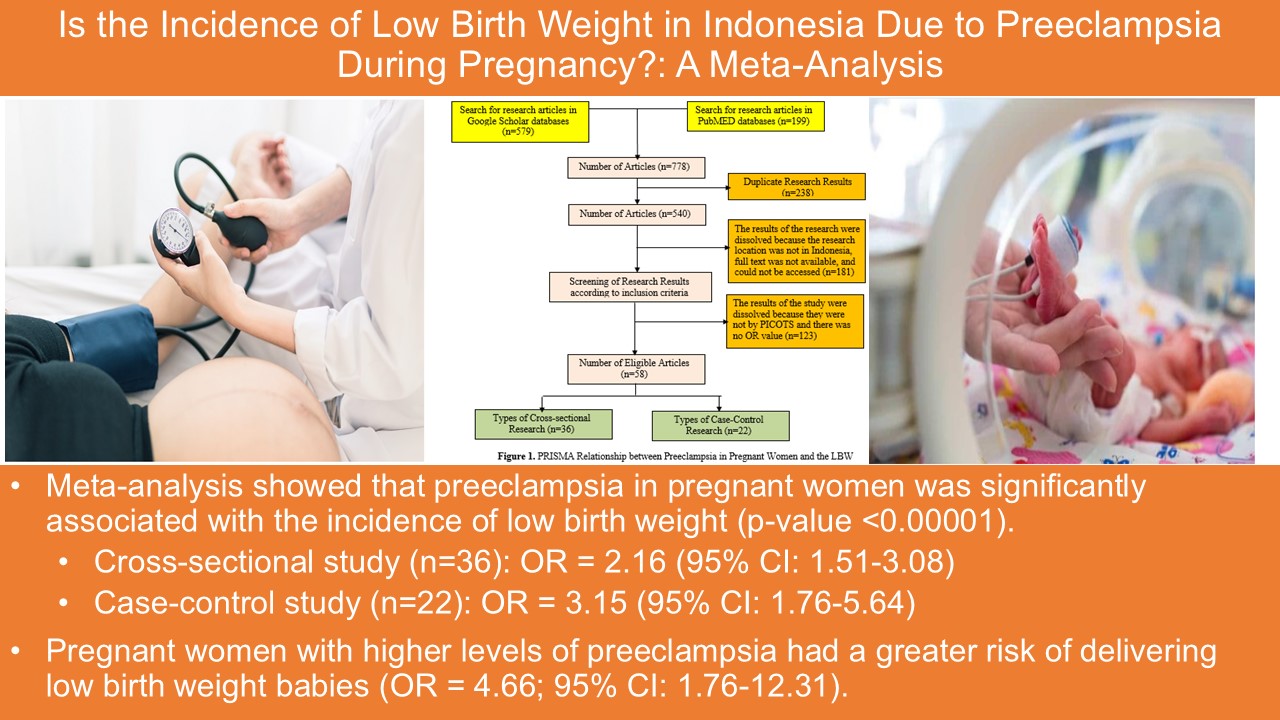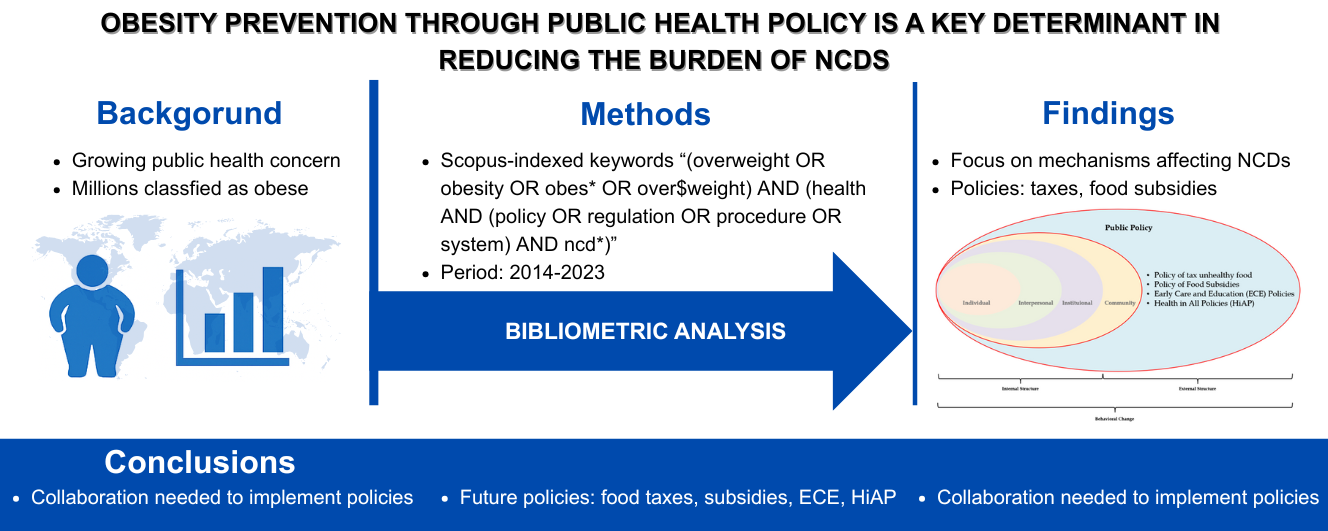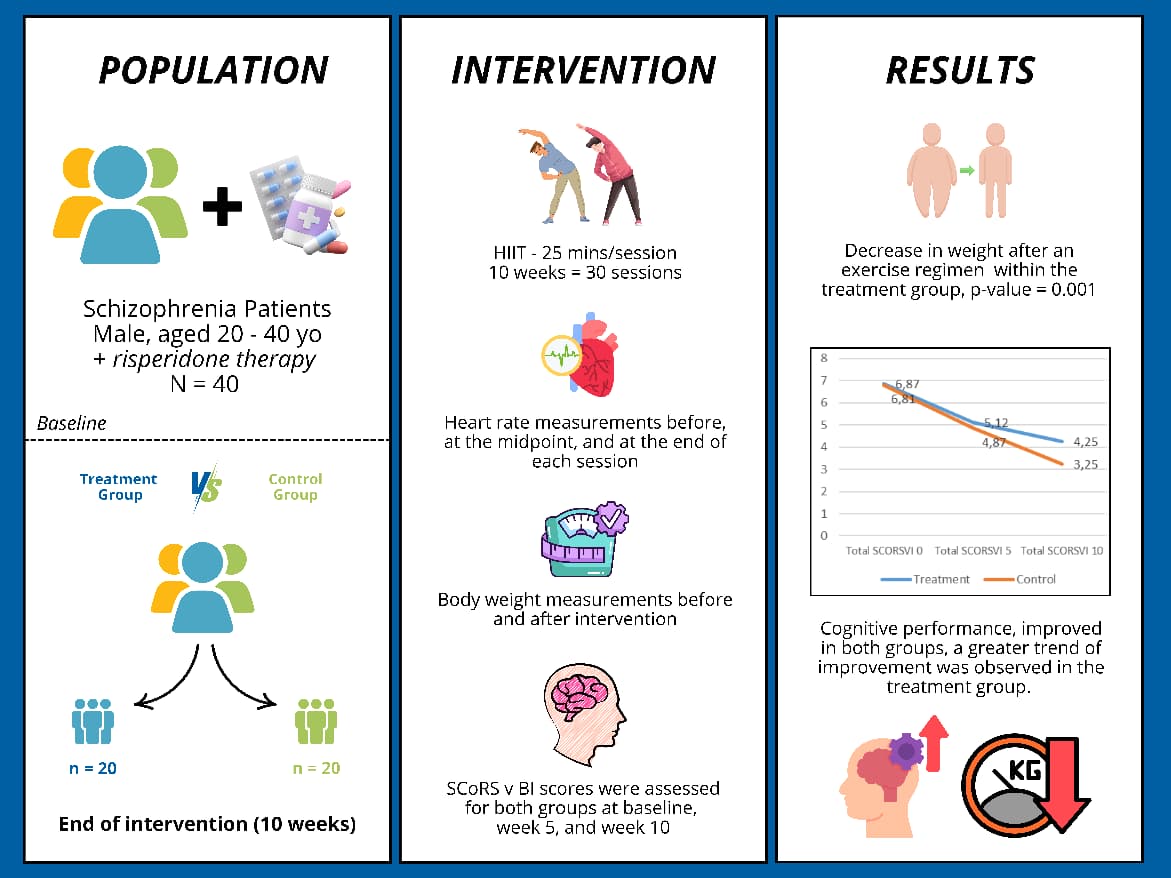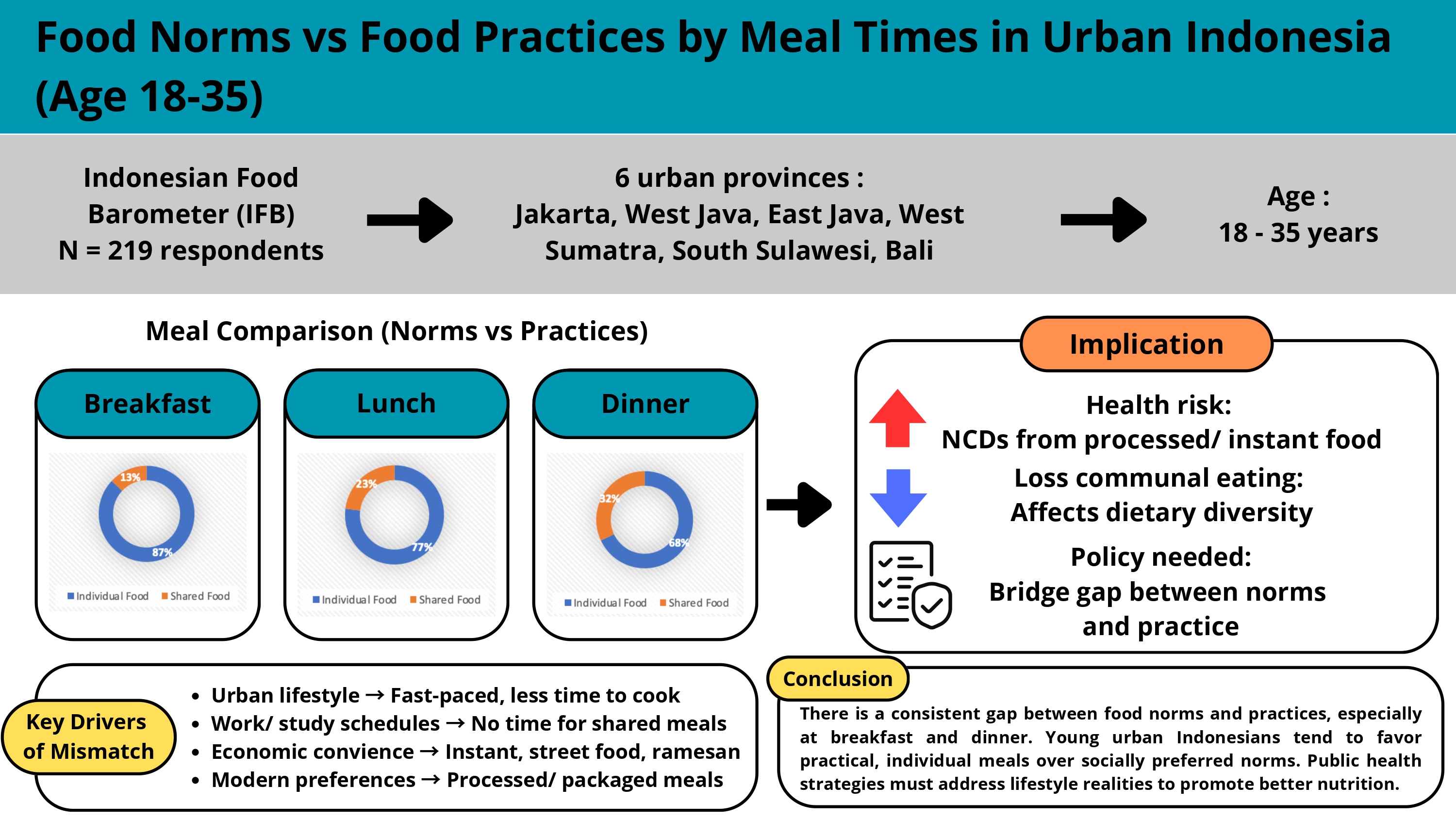Three Body Mass Index Classification Comparison In Predicting Hypertension Among Middle-Aged Indonesians
Downloads
Cardiovascular disease is one of the severe causes of death in low-middle-income countries. Being overweight and obese relates to a higher risk of hypertension, which further increases the risk of CVD. Therefore, determining body mass index (BMI) cut-off points is essential to provide a new scale for early and accurate screening. This study aimed to compare three classifications of BMI defined by WHO, Indonesia, and Asian criteria in predicting hypertension in middle-aged Indonesians. We used the 2014 Indonesian Family Life Survey data and included a total sample of 9737 respondents aged 40-60-year-old. We compared values (specificity, sensitivity, negative and positive predictive value, false-positive rate, negative and positive likelihood ratio, Youden index, and prevalence) of three BMI criteria (WHO, Indonesian, and Asian) between groups (Group 1: normal BMI vs overweight + obese BMI; group 2: normal + overweight BMI vs obese BMI) to determine the cut-off points of BMI related to hypertension. The hypertension prevalence was significantly higher in women (48.3%) than in men (42.0%). Respondents' BMI was positively associated with hypertension. The Asian BMI classification showed better sensitivity, specificity, PPV, NPV, FPR, LR+, LR-, and Youden index in group 1 than in group 2. Thus, this study proposed a fitted BMI cut-off point for overweight was ≥23 kg/m2 and for obesity was ≥25 kg/m2 as the early screening of overweight and obesity related to hypertension among the middle-aged population in Indonesia.
Aizawa T, Helble MC. (2016). Socioeconomic Inequity in Excessive Weight in Indonesia.
Alberti KG, Zimmet P, Shaw J. (2006). Metabolic syndrome--a new world-wide definition. A Consensus Statement from the International Diabetes Federation. Diabet Med. 23(5):469-480.
Allison, D. B., Faith, M. S., Heo, M., & Kotler, D. P. (1997). Hypothesis concerning the U-shaped relation between body mass index and mortality. American journal of epidemiology, 146(4), 339-349.
Angkurawaranon C, Jiraporncharoen W, Chenthanakij B, Doyle P, Nitsch D. (2014). Urban environments and obesity in Southeast Asia: a systematic review, meta-analysis and meta-regression. PLoS One. 9(11):e113547.
Aris IM, Bernard JY, Chen LW, Tint MT, Pang WW, Lim WY, Soh SE, Saw SM, Godfrey KM, Gluckman PD et al. (2007). Infant body mass index peak and early childhood cardio-metabolic risk markers in a multi-ethnic Asian birth cohort. Int J Epidemiol. 46(2):513-525.
Battie CA, Borja-Hart N, Ancheta IB, Flores R, Rao G, Palaniappan L. (2016). Comparison of body mass index, waist circumference, and waist to height ratio in the prediction of hypertension and diabetes mellitus: Filipino-American women cardiovascular study. Prev Med Rep. 4:608-613.
Bell AC, Adair LS, Popkin BM. (2002). Ethnic differences in the association between body mass index and hypertension. American Journal of Epidemiology. 155(4):346-353.
Bell K, Twiggs J, Olin BR, Date IR. (2015). Hypertension: The Silent Killer: Updated JNC-8 Guideline Recommendations. In.: Alabama Pharmacy Association, Montgomery, Ala, USA.
Bohr AD, Laurson K, McQueen MB. (2016). A novel cutoff for the waist-to-height ratio predicting metabolic syndrome in young American adults. BMC Public Health. 16:295.
Bovet P, Arlabosse T, Viswanathan B, Myers G. (2012). Association between obesity indices and cardiovascular risk factors in late adolescence in the Seychelles. BMC pediatrics. 12(1):176.
Bovet P, Chiolero A, Paccaud F, Banatvala N. (2015). Screening for cardiovascular disease risk and subsequent management in low- and middle-income countries: challenges and opportunities. Public Health Reviews. 36(1).
Brown T, Smith S, Bhopal R, Kasim A, Summerbell C. (2015). Diet and physical activity interventions to prevent or treat obesity in South Asian children and adults: a systematic review and meta-analysis. Int J Environ Res Public Health. 12(1):566-594.
Cheung YB. (2014). "A Body Shape Index" in middle-age and older Indonesian population: scaling exponents and association with incident hypertension. PLoS One. 9(1):e85421.
Chobanian AV, Bakris GL, Black HR, Cushman WC, Green LA, Izzo JL, Jr., Jones DW, Materson BJ, Oparil S, Wright JT, Jr. et al. (2003). The Seventh Report of the Joint National Committee on Prevention, Detection, Evaluation, and Treatment of High Blood Pressure: the JNC 7 report. JAMA. 289(19):2560-2572.
Correa MM, Thume E, De Oliveira ER, Tomasi E. (2016). Performance of the waist-to-height ratio in identifying obesity and predicting non-communicable diseases in the elderly population: A systematic literature review. Arch Gerontol Geriatr. 65:174-182.
Decoda Study G, Nyamdorj R, Qiao Q, Lam TH, Tuomilehto J, Ho SY, Pitkaniemi J, Nakagami T, Mohan V, Janus ED et al. (2008). BMI compared with central obesity indicators in relation to diabetes and hypertension in Asians. Obesity (Silver Spring). 16(7):1622-1635.
Denova-Gutierrez E, Tucker KL, Flores M, Barquera S, Salmeron J. (2016). Dietary Patterns Are Associated with Predicted Cardiovascular Disease Risk in an Urban Mexican Adult Population. J Nutr. 146(1):90-97.
Dhana K, Kavousi M, Ikram MA, Tiemeier HW, Hofman A, Franco OH. (2016). Body shape index in comparison with other anthropometric measures in prediction of total and cause-specific mortality. J Epidemiol Community Health. 70(1):90-96.
Doll S, Paccaud F, Bovet P, Burnier M, Wietlisbach V. (2002). Body mass index, abdominal adiposity and blood pressure: consistency of their association across developing and developed countries. International journal of obesity. 26(1):48.
Frankenberg E, Karoly LA, Gertler P, Achmad S, Agung I, Hatmadji SH, Sudharto P. (1995). The 1993 Indonesian Family Life Survey: overview and field report.
Frankenberg E, Thomas D. (2000). The Indonesia Family Life Survey (IFLS): Study Design and Results from Waves 1 and 2. DRU2238/1 NIA/NICHD RAND.
Gallagher D, Heymsfield SB, Heo M, Jebb SA, Murgatroyd PR, Sakamoto Y. (2000). Healthy percentage body fat ranges: an approach for developing guidelines based on body mass index. Am J Clin Nutr. 72(3):694-701.
Gearon E, Backholer K, Stevenson C, Magliano DJ, Keating C, Ball K, Beauchamp A, Peeters A. (2015). Trends in body mass index according to educational attainment for urban Australian adults between 1980 and 2007. Int J Obes (Lond). 39(6):1019-1026.
Gurrici S, Hartriyanti Y, Hautvast JGAJ, Deurenberg P. (1998). Relationship between body fat and body mass index: differences between Indonesians and Dutch Caucasians. European Journal of Clinical Nutrition. 52(11):779-783.
Harahap H, Widodo Y, Mulyati S. (2005). Penggunaan Berbagai Cut-Off Indeks Massa Tubuh sebagai Indikator Obesitas Terkait Penyakit Degeneratif di Indonesia. Gizi Indonesia. 2(28).
Hawkes C, Smith TG, Jewell J, Wardle J, Hammond RA, Friel S, Thow AM, Kain J. (2015). Smart food policies for obesity prevention. Lancet; 385(9985):2410-2421.
He W, Li Q, Yang M, Jiao J, Ma X, Zhou Y, Song A, Heymsfield SB, Zhang S, Zhu S. (2015). Lower BMI cutoffs to define overweight and obesity in China. Obesity (Silver Spring). 23(3):684-691.
He YH, Jiang GX, Yang Y, Huang HE, Li R, Li XY, Ning G, Cheng Q. (2009). Obesity and its associations with hypertension and type 2 diabetes among Chinese adults age 40 years and over. Nutrition. 25(11-12):1143-1149.
Helble MC, Aizawa T. (2016). Urbanization and Inequality in Hypertension Diagnosis and Medication in Indonesia.
Hussain MA, Al Mamun A, Peters SA, Woodward M, Huxley RR. (2016.) The Burden of Cardiovascular Disease Attributable to Major Modifiable Risk Factors in Indonesia. J Epidemiol. 26(10):515-521.
Hussain MA, Mamun AA, Reid C, Huxley RR. (2016). Prevalence, Awareness, Treatment and Control of Hypertension in Indonesian Adults Aged >/=40 Years: Findings from the Indonesia Family Life Survey (IFLS). PLoS One. 11(8):e0160922.
Jiang J, Deng S, Chen Y, Liang S, Ma N, Xu Y, Chen X, Cao X, Song C, Nie W. (2016). Comparison of visceral and body fat indices and anthropometric measures in relation to untreated hypertension by age and gender among Chinese. International journal of cardiology. 219:204-211.
Kementrian Kesehatan RI. (2003). Petunjuk Teknis Pemantauan Status Gizi Orang Dewasa dengan Indeks Massa Tubuh: Departemen Kesehatan RI.
Krakauer NY, Krakauer JC. (2012). A new body shape index predicts mortality hazard independently of body mass index. PLoS One. 7(7):e39504.
Lalkhen, A. G., & McCluskey, A. (2008). Clinical tests: sensitivity and specificity. Continuing education in anaesthesia critical care & pain, 8(6), 221-223.
Li, J., Yu, S., Zhou, W., Zhu, L., Wang, T., Bao, H., Huang, X., & Cheng, X. (2021). U-shaped association of body mass index with the risk of peripheral arterial disease in Chinese hypertensive population. International Journal of General Medicine, 14, 3627.
Liu A, Byrne NM, Kagawa M, Ma G, Poh BK, Ismail MN, Kijboonchoo K, Nasreddine L, Trinidad TP, Hills AP. (2011). Ethnic differences in the relationship between body mass index and percentage body fat among Asian children from different backgrounds. Br J Nutr. 106(9):1390-1397.
Malik S, Wong ND, Franklin SS, Kamath TV, L'Italien GJ, Pio JR, Williams GR. (2004). Impact of the metabolic syndrome on mortality from coronary heart disease, cardiovascular disease, and all causes in United States adults. Circulation. 110(10):1245-1250.
Maxim LD, Niebo R, Utell MJ. (2014). Screening tests: a review with examples. Inhal Toxicol. 26(13):811-828.
Mendis S, Puska P, Norrving B. (2015). Global atlas on cardiovascular disease prevention and control: World Health Organization.
National High Blood Pressure Education Program, National Institutes of Health, National Heart L, and Blood Institute. The Seventh Report of the Joint National Committee on Prevention, Detection, Evaluation, and Treatment of High Blood Pressure. In. United States: U.S. Department of Health and Human Services; 2004.
Nguyen TT, Adair LS, Suchindran CM, He K, Popkin BM. (2009) The association between body mass index and hypertension is different between East and Southeast Asians. Am J Clin Nutr. 89(6):1905-1912.
Pan S, Yu ZX, Ma YT, Liu F, Yang YN, Ma X, Fu ZY, Li XM, Xie X, Chen Y et al. (2013). Appropriate body mass index and waist circumference cutoffs for categorization of overweight and central adiposity among Uighur adults in Xinjiang. PLoS One. 8(11):e80185.
Pan WH, Flegal KM, Chang HY, Yeh WT, Yeh CJ, Lee WC. (2004). Body mass index and obesity-related metabolic disorders in Taiwanese and US whites and blacks: implications for definitions of overweight and obesity for Asians. Am J Clin Nutr.; 79(1):31-39.
Parikh R, Mathai A, Parikh S, Sekhar GC, Thomas R. (2008). Understanding and using sensitivity, specificity and predictive values. Indian journal of ophthalmology. 56(1):45.
Pearce N. (2004). Effect measures in prevalence studies. Environ Health Perspect. 112(10):1047-1050.
Pugh, J., Wilkinson, D., & Savulescu, J. (2022). Sense and sensitivity: can an inaccurate test be better than no test at all?. Journal of Medical Ethics, 48(5), 329-333.
Ren Q, Su C, Wang H, Wang Z, Du W, Zhang B. (2016). Prospective Study of Optimal Obesity Index Cut-Off Values for Predicting Incidence of Hypertension in 18-65-Year-Old Chinese Adults. PLoS One. 11(3):e0148140.
Roemling C, Qaim M. (2010). Obesity trends and determinants in Indonesia. Appetite. 58(3):1005-1013.
Rosengren A, Teo K, Rangarajan S, Kabali C, Khumalo I, Kutty VR, Gupta R, Yusuf R, Iqbal R, Ismail N et al. (2015). Psychosocial factors and obesity in 17 high-, middle- and low-income countries: the Prospective Urban Rural Epidemiologic study. Int J Obes (Lond). 39(8):1217-1223.
Shaikh S, Jones-Smith J, Schulze K, Ali H, Christian P, Shamim AA, Mehra S, Labrique A, Klemm R, Wu L et al. (2016). Excessive adiposity at low BMI levels among women in rural Bangladesh. J Nutr Sci. 5:e11.
Stevens J, Nowicki EM. (2003). Body mass index and mortality in asian populations: implications for obesity cut-points. Nutr Rev. 61(3):104-107.
Strauss J, Beegel K, Sikoki B, Dwiyanto A, Herawati Y, Witoelar F. (2004). The third wave of the indonesia family life survey: Overview and field report. March 2004. In.: WR144/1-NIA/NICHD.
Strauss J, Witoelar F, Sikoki B. (2016). The Fifth Wave of the Indonesia Family Life Survey: Overview and Field Report.
Thinggaard, M., Jacobsen, R., Jeune, B., Martinussen, T., & Christensen, K. (2010). Is the relationship between BMI and mortality increasingly U-shaped with advancing age? A 10-year follow-up of persons aged 70–95 years. Journals of Gerontology Series A: Biomedical Sciences and Medical Sciences, 65(5), 526-531.
Trevethan, R. (2017). Sensitivity, specificity, and predictive values: foundations, pliabilities, and pitfalls in research and practice. Frontiers in public health, 5, 307.
Tuan NT, Adair LS, Stevens J, Popkin BM. (2010). Prediction of hypertension by different anthropometric indices in adults: the change in estimate approach. Public Health Nutr. 13(5):639-646.
Vasconcelos FdAGd, Cordeiro BA, Rech CR, Petroski EL. (2010). Sensitivity and specificity of the body mass index for the diagnosis of overweight/obesity in elderly. Cadernos de saude publica. 26(8):1519-1527.
Wald N, Hackshaw A, Frost C. (1999). When can a risk factor be used as a worthwhile screening test? BMJ: British Medical Journal. 319(7224):1562.
Wen CP, Cheng TYD, Tsai SP, Chan HT, Hsu HL, Hsu CC, Eriksen MP. (2009). Are Asians at greater mortality risks for being overweight than Caucasians? Redefining obesity for Asians. Public health nutrition. 12(04):497-506.
WHO Expert Consultation. (2004). Appropriate body-mass index for Asian populations and its implications for policy and intervention strategies. Lancet (London, England). 363(9403):157.
WHO Expert Consultation. (2008). Waist circumference and waist-hip ratio. Report of a WHO Expert Consultation Geneva: World Health Organization.8-11.
World Health Organization. (2000) Obesity: preventing and managing the global epidemic. Geneva: World Health Organization.
World Health Organization. (2013). A global brief on hypertension: silent killer, global public health crisis. Geneva: World Health Organization.
World Health Organization. (2014). Global status report on noncommunicable diseases 2014
World Health Organization. (2000). The Asia-Pacific perspective:redefining obesity and its treatment.
Zeng Q, He Y, Dong S, Zhao X, Chen Z, Song Z, Chang G, Yang F, Wang Y. (2014) Optimal cut-off values of BMI, waist circumference and waist:height ratio for defining obesity in Chinese adults. Br J Nutr. 112(10):1735-1744.
Zhang M, Zhao Y, Wang G, Zhang H, Ren Y, Wang B, Zhang L, Yang X, Han C, Pang C et al. (2016) Body mass index and waist circumference combined predicts obesity-related hypertension better than either alone in a rural Chinese population. Sci Rep. 6:31935.
Zhao M, Bovet P, Ma C, Xi B. (2017). Performance of different adiposity measures for predicting cardiovascular risk in adolescents. Sci Rep. 7:43686.
Zheng W, McLerran DF, Rolland B, Zhang X, Inoue M, Matsuo K, He J, Gupta PC, Ramadas K, Tsugane S et al. (2011). Association between body-mass index and risk of death in more than 1 million Asians. N Engl J Med. 364(8):719-729.
Zimmer Z, Hanson HA, Smith K. (2016). Childhood socioeconomic status, adult socioeconomic status, and old-age health trajectories. Demographic Research. 34:285-320.

This work is licensed under a Creative Commons Attribution-NonCommercial-ShareAlike 4.0 International License.
- MEDIA GIZI INDONESIA Journal is the copyright owner of all materials published on this website.
- The formal legal provisions for access to digital articles of this electronic journal are subject to the terms of the Creative Commons Attribution-NonCommercial-ShareAlike license (CC BY-NC-SA 4.0), which means that MEDIA GIZI INDONESIA Journal and readers reserve the right to save, transmit media / format, manage in database, maintain, and publish articles as long as it continues to include the name of the Author.
- Printed and published print and electronic manuscripts are open access for educational, research and library purposes. In addition to these objectives, the editorial board shall not be liable for violations of copyright law.


2.png)





















